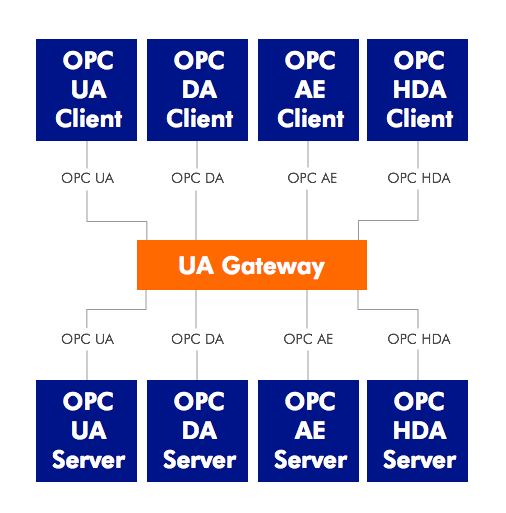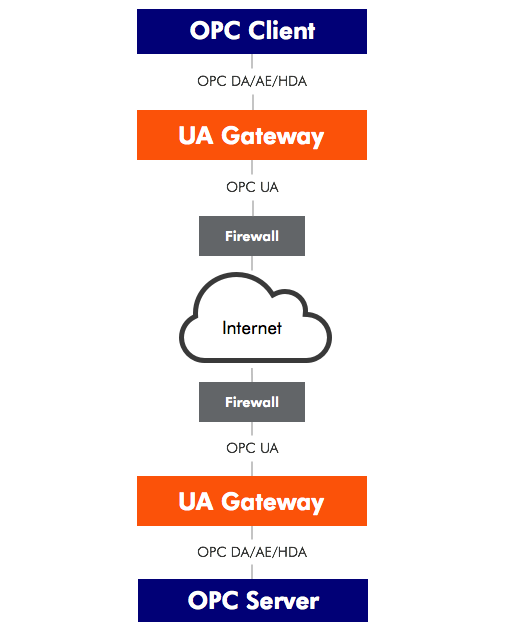
OPC UA Gateway
OPC UA Gateway is a high performance Wrapper/Proxy that enables all OPC DA products to be connected with new OPC UA products.
OPC UA Gateway is a high-performance Wrapper/Proxy which enables all “classic” COM/DCOM-based OPC products to be connected to the new OPC UA (Unified Architecture) products.
OPC UA Gateway can be applied in many systems and use cases. Use cases of OPC UA Gateway include:
- connect UA Client to COM/DCOM Server
- connect COM/DCOM Client to UA Server
- tunnel COM/DCOM through secure UA connection
- data concentration on a single node; single point of access
- firewall-friendly, secure data access to "classic" OPC
- ReverseConnect-Proxy when UA Server(s) live behind Firewall
- Tagfile and Cache for individual AddressSpace mapping

OPC UA Client is connected to multiple servers using OPC UA Gateway.

OPC UA Gateway is used to connect a DCOM based OPC client to an OPC server securely over the Internet.
Features
In terms of underlying connections and functionality of the core component OPC UA Gateway offers a variety of interfaces. Depending on your requirements, individual interfaces can be enabled by individual license keys. The interfaces include:
- Data Access (base interface)
- Alarms and Events (optional interface)
- Historical Data Access (optional interface)
- Tag File & Cache (optional interface)
Technical details
- Windows 32Bit application, can also run on 64Bit Windows (WOW64)
- Can be installed on standard Windows (XP, Vista, Win7, Win8, Win10)
- Supports OPC UA, OPC DA 2/3, OPC AE and OPC HDA (see price list for licensing details)
- Can connect to multiple COM DA Servers and UA Servers at the same time
- Connections can be added during runtime without restarting the UaGateway
What is OPC?
OPC and OPC UA (Unified Architecture) are industry standards that enable software to connect devices, machines and systems from different manufacturers using same interface.
